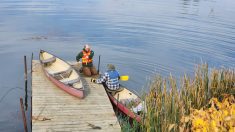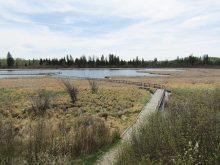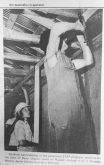If questioned about a “school inspector,” today’s students might assume that a health and safety inspection was the topic. But in the days of the one-room rural school, a visit by the school inspector was viewed as an important event. As a student in the 1950s and ’60s — before the amalgamation of most rural school districts — I remember that a visit by the inspector was something we discussed afterwards, both at school and home, and whenever I see an old country school I am reminded of those days.
Read Also

VIDEO: Assiniboine College program sows digital farm skills
The new digital agriculture fundamentals program has kicked off at Assiniboine College in Brandon.
Rural teachers were often young women, perhaps not much older than the oldest pupils, and with a Grade 11 or 12 education followed by a few months of “normal school” where teaching and discipline methods were taught. Some beginning teachers even taught “on a permit” for a year or two until they had taken the required training.
School inspection was more an overseeing of the teacher rather than of the school, but likely the cleanliness and neatness of the school were also scrutinized. A reprimand could result if those were not adequate, since the teacher might be in charge of janitorial duties as well — or at least to supervise students as they cleaned up at the end of the day. In winter, the teacher might also be responsible for lighting the school stove, although some school boards hired an older male student to arrive early to do this.
The inspector usually visited twice a year, always unannounced, but a wary teacher might expect the visit in spring and fall, even suggesting to older students to announce if an unknown vehicle drove into the schoolyard so there could be some hurried preparations and straightening up.
In anticipation of an inspection the teacher would ensure that the register (showing personal identification, attendance and absences) was always kept neatly up to date, since this was one item that was always examined, to be sure that children were in regular attendance. The inspector would also check to see that the course of study for all eight or nine grades was being followed and that a timetable was posted, showing the daily schedules. He would examine a few students’ notebooks, listen to several read, and question them on various subjects to ascertain if the subjects were being taught adequately.
My husband attended a country school in a French-speaking district, and there was another consideration there — the need to hide French books when the inspector came. Since 1916, teaching of any language other than English was prohibited in Manitoba, and this still held until the mid-1950s, when the law began to loosen a bit. However, in school districts where French was the primary language used at home, the trustees often hired francophone teachers with the understanding that part of the teaching could include French instruction, and some inspectors would look the other way if a French book was seen. (In Ukrainian districts this use of forbidden texts also occurred for books in the Ukrainian language.)
Fortunately for the teacher, we students usually believed that we were the ones being inspected, and therefore were on our best behaviour. One thing we were always taught and were careful to do was to stand and greet the inspector as soon as he entered the classroom, making for an eventful day in the life of a one-room school student.




















